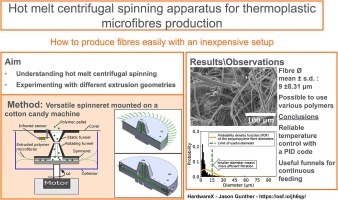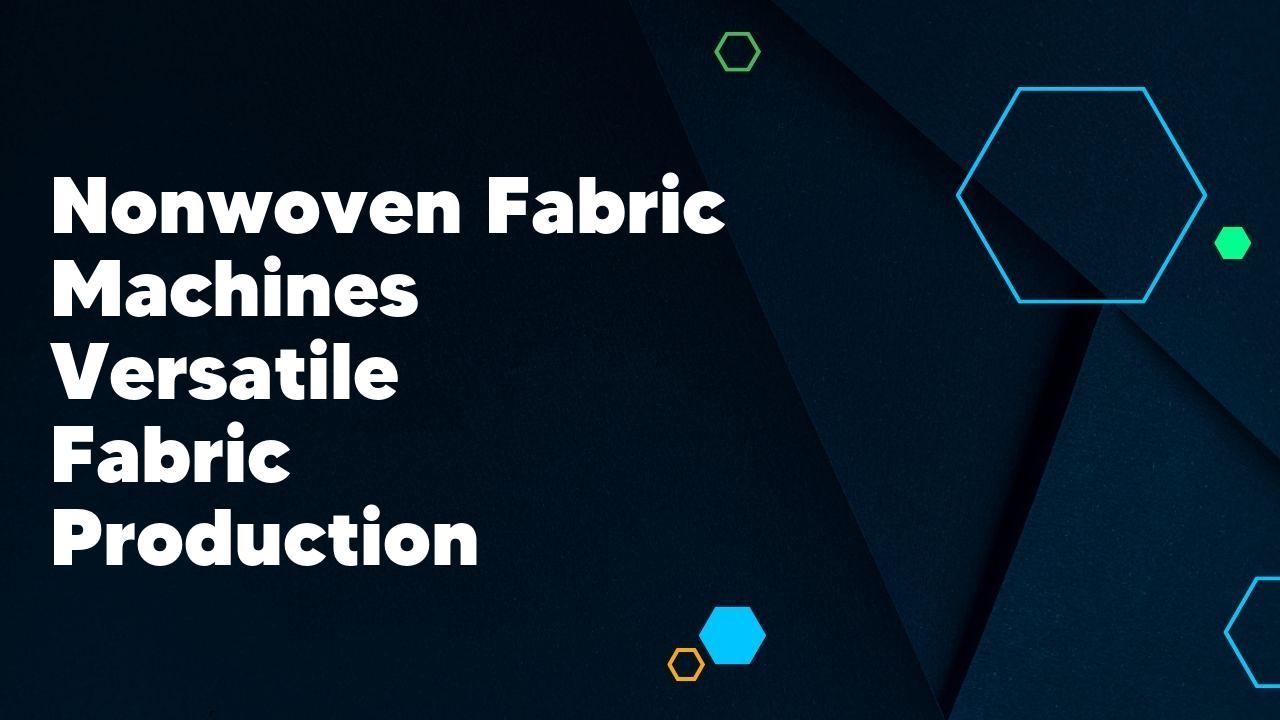Nonwoven fabric machines have revolutionized the textile industry by offering a versatile and efficient method of fabric production. These machines are capable of producing a wide range of nonwoven fabrics, which are increasingly in demand for various applications such as medical textiles, geotextiles, and automotive textiles. With their ability to produce fabrics with unique properties and characteristics, nonwoven fabric machines have become an essential tool for manufacturers looking to meet the growing demand for innovative and sustainable textiles.
Introduction to Nonwoven Fabric Machines: A Versatile Solution for Fabric Production
Nonwoven fabric machines have revolutionized the fabric production industry with their versatility and efficiency. These machines are capable of producing nonwoven fabrics, which are fabrics made from fibers that are bonded together rather than woven. This unique production process allows for the creation of fabrics with various properties, such as strength, durability, and breathability. Nonwoven fabric machines can be used to produce a wide range of products, including medical textiles, geotextiles, automotive textiles, and filtration materials. With their ability to produce fabrics quickly and cost-effectively, nonwoven fabric machines have become an essential tool for many industries.
Understanding the Process of Nonwoven Fabric Production

Nonwoven fabric production is a complex process that involves several steps. The first step is the selection of raw materials, which can include natural fibers like cotton or synthetic fibers like polyester. These fibers are then carded, which means they are combed and aligned in a uniform manner. The next step is the web formation, where the fibers are laid out in a web-like structure. This web is then bonded together using various methods such as heat, chemicals, or mechanical processes. The final step is finishing, where the fabric is treated to enhance its properties like strength, durability, or water resistance. Overall, understanding the process of nonwoven fabric production is crucial for anyone involved in the textile industry.
Types of Nonwoven Fabric Machines and Their Applications
Nonwoven fabric machines are used to produce various types of nonwoven fabrics, which are widely used in various industries. One type of nonwoven fabric machine is the spunbond machine, which uses a spinning process to create continuous filaments that are then bonded together to form a fabric. This type of machine is commonly used in the production of disposable medical products, such as surgical gowns and masks. Another type of nonwoven fabric machine is the needle punching machine, which uses barbed needles to interlock fibers and create a fabric. This machine is often used in the production of carpets and automotive interiors. Overall, nonwoven fabric machines play a crucial role in the manufacturing of nonwoven fabrics for a wide range of applications.
Advantages of Nonwoven Fabric Machines in the Textile Industry
Nonwoven fabric machines have revolutionized the textile industry with their numerous advantages. Firstly, these machines offer high production efficiency, allowing manufacturers to produce large quantities of nonwoven fabrics in a short amount of time. This not only increases productivity but also reduces production costs. Additionally, nonwoven fabric machines are versatile and can produce a wide range of fabrics with different properties and characteristics. This flexibility allows manufacturers to cater to various market demands and expand their product offerings. Furthermore, these machines are easy to operate and require minimal maintenance, making them a cost-effective choice for textile manufacturers. Overall, nonwoven fabric machines have greatly improved the efficiency and profitability of the textile industry.
Challenges and Innovations in Nonwoven Fabric Machine Technology
Nonwoven fabric machine technology has faced numerous challenges in recent years, but it has also seen significant innovations. One of the main challenges is the increasing demand for sustainable and eco-friendly nonwoven fabrics. Manufacturers are under pressure to develop machines that can produce these fabrics using recycled materials and with minimal environmental impact. Another challenge is the need for machines that can produce nonwoven fabrics with improved performance characteristics, such as increased strength and durability. Innovations in machine technology have focused on addressing these challenges, with advancements in materials, processes, and automation. These innovations have resulted in machines that can produce nonwoven fabrics with higher efficiency, lower energy consumption, and reduced waste.
Future Outlook: The Growing Demand for Nonwoven Fabric Machines
The future outlook for nonwoven fabric machines is promising, as there is a growing demand for these machines in various industries. Nonwoven fabrics are increasingly being used in sectors such as healthcare, automotive, construction, and agriculture, among others. This is driving the need for efficient and advanced nonwoven fabric machines that can produce high-quality fabrics at a faster rate. Additionally, the increasing focus on sustainability and eco-friendly materials is also contributing to the demand for nonwoven fabrics, as they are recyclable and can be produced using less energy compared to traditional woven fabrics. As a result, the market for nonwoven fabric machines is expected to witness significant growth in the coming years.
Conclusion
In conclusion, nonwoven fabric machines have revolutionized the fabric production industry with their versatility and efficiency. These machines have the ability to produce a wide range of fabrics with different properties and characteristics, making them suitable for various applications. With the continuous advancements in technology, nonwoven fabric machines are expected to further improve and contribute to the growth of the fabric production industry.
What are nonwoven fabric machines?
Nonwoven fabric machines are specialized equipment used in the production of nonwoven fabrics. These machines are designed to convert various types of fibers into a web-like structure, which is then bonded together to form a fabric.
What are the advantages of nonwoven fabrics?
Nonwoven fabrics offer several advantages over traditional woven or knitted fabrics. They are typically more cost-effective, have higher production speeds, and can be produced in a wide range of thicknesses and densities. Nonwoven fabrics are also known for their excellent strength, durability, and breathability.
What types of nonwoven fabric machines are available?
There are several types of nonwoven fabric machines available, including needle punching machines, spunbond machines, meltblown machines, and airlaid machines. Each type of machine is designed for specific applications and can produce different types of nonwoven fabrics.
What industries use nonwoven fabrics?
Nonwoven fabrics are used in a wide range of industries, including automotive, healthcare, agriculture, construction, and personal care. They are commonly used for applications such as filtration, insulation, packaging, hygiene products, and geotextiles.
What factors should be considered when choosing nonwoven fabric machines?
When choosing nonwoven fabric machines, several factors should be considered, including the desired fabric properties, production capacity, energy efficiency, maintenance requirements, and overall cost. It is important to select machines that are suitable for the specific requirements of the intended application.
Are nonwoven fabric machines easy to operate?
Nonwoven fabric machines can vary in complexity, but most modern machines are designed to be user-friendly and easy to operate. However, proper training and knowledge of the machine’s operation are essential to ensure optimal performance and product quality.

